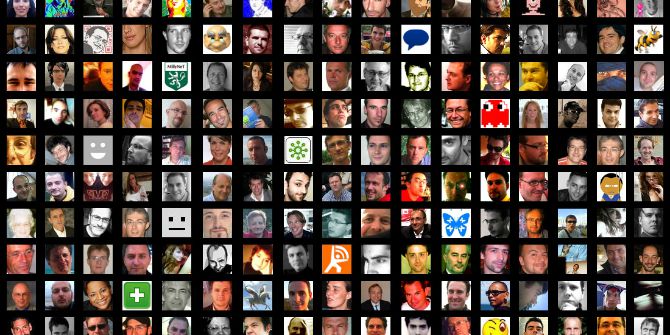Health information and communication technology (HICT) holds enormous potential to improve productivity. Several countries, the UK and the US included, have embraced this idea and spent billions of dollars on promoting HICT adoption. Ari Bronsoler, Joe Doyle, and John Van Reenen reviewed 975 papers in the medical and economics literatures about HICT and found that on average there are major positive effects on patient outcomes and healthcare productivity.
Healthcare delivery revolves around information gathering, inference, and communication across providers and with patients. As a result, health information and communication technology (HICT) holds enormous potential to improve productivity. Several countries have embraced this idea and spent billions of dollars on promoting HICT adoption. For example, through the HITECH Act, the US spent $30 billion to increase adoption of HICT by subsidising acquisition costs, changing reimbursement rules, and providing technical support. This act was partly inspired by the “NHS Connecting for Health” initiative, started in 2002 in the UK, which cost around £10 billion. There was a rapid growth in HICT adoption following the US law. Fewer than 10% of hospitals were using electronic health records (EHR) prior to 2009, but this had risen to 97% by 2014.
The electronic health record is a digitised medical chart. Deriving value from this technology requires a broad array of functions that gather, manage, and share digital health information. This information can then be exploited to support medical decision-making and operations. Ideally, information gathering begins before a patient encounter: retrieving records from other providers or past patient encounters. This, and other information, is then updated at the beginning of the patient’s interaction with the physician or nursing staff; additional data—such as lab values, images, and progress notes—are added as the encounter progresses. This data can be made portable so that it may be shared with other providers or accessed via patient portals. Improvements in HICT have led to novel applications over the last few years: clinical decision support (which helps doctors avoid mistakes by sending alerts of drug interactions and allergies), telemedicine, and healthcare analytics are just a few examples.
Barriers to adoption and implementation of new technologies in the healthcare sector mirror those faced in other sectors. Complexity, cost, competition, and complementary factors (such as human capital) are all important drivers in such decisions. Moreover, since mistakes in healthcare delivery are much more costly than in other industries, there is a significant lack of trust in HICT and reluctance to change from physicians who fear preventable mistakes from using new technologies. Finally, because of the nature of the data that is required to successfully implement HICT systems, privacy concerns play an important role, with tougher privacy laws reducing adoption rates by as much as 24%. Creating proper incentives and management initiatives to effectively incorporate HICT into daily operations is a significant challenge policy-makers and hospitals face.
Widespread interest for HICT has led to a boom in research trying to estimate the effect of HICT on clinical outcomes and productivity. There were only 118 publications with “Health Information Technology” in the title or abstract of the paper in 1990, but a whopping 3,556 in 2018. In our new paper, we reviewed 975 papers in the medical and economics literatures about HICT, and found that on average (especially in more recent studies) there are major positive effects on patient outcomes and healthcare productivity. However, there is enormous variation across studies. One conclusion is that better communication and coordination across systems and hospitals are necessary to capture the full potential of HICT.
HICT has not lived up to its potential of producing massive cost savings. Indeed, costs tend to rise after HICT adoption, although this recedes over time, consistent with the ideas that it takes time to learn how to use the new tools and there is a need for management to experiment with what works best.
There is little work on the impact of technology on the healthcare workforce. We look at time-series variation in healthcare employment and show no detectable negative effects on overall jobs. Nonetheless, some specific occupations benefit more, and others lose out. For example, information technicians in the health sector have experienced employment growth (as a share of the healthcare workforce), as well as wage growth. Not surprisingly, medical transcriptionists appear to have been displaced with both employment share and wages falling. Nurses – the largest health occupation – show no big changes. This is consistent with the plausible idea that these technologies complement IT workers, substitute for medical transcriptionists but are broadly neutral with respect to nurses so far. Looking at the wage ranking in 1980, nurses are the best paid, technicians the worst paid and transcriptionists in the middle. This is consistent with broader concerns that IT innovation displaces workers in the middle of the skill distribution. As innovation around the use of HICT continues to grow, finding ways to increase the skills of the labour force to complement the new technology can improve the wellbeing of the workforce while improving productivity at the same time.
♣♣♣
Notes:
- This blog post is based on The impact of healthcare IT on clinical quality, productivity and workers, CEP Paper Number CEPDP1801.
- The post represents the views of its author(s), not the position of LSE Business Review or the London School of Economics.
- Featured image by Shopify Partners, under a Burst licence
- When you leave a comment, you’re agreeing to our Comment Policy.





